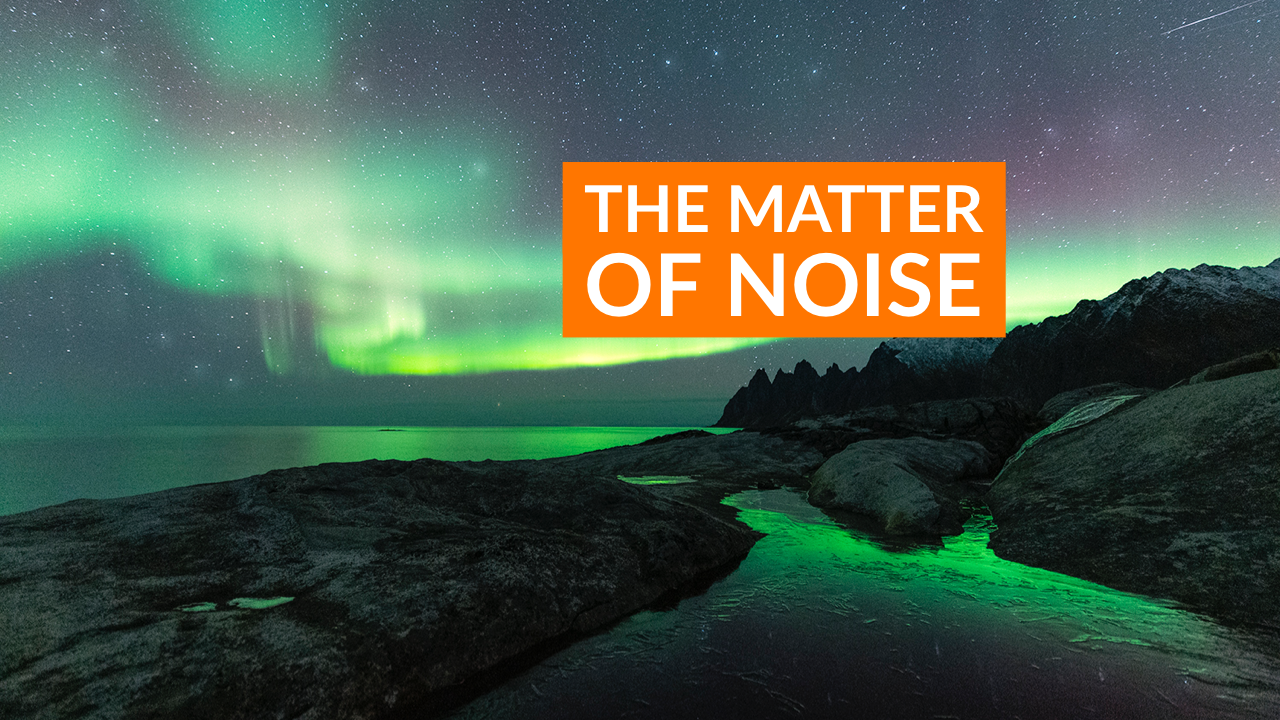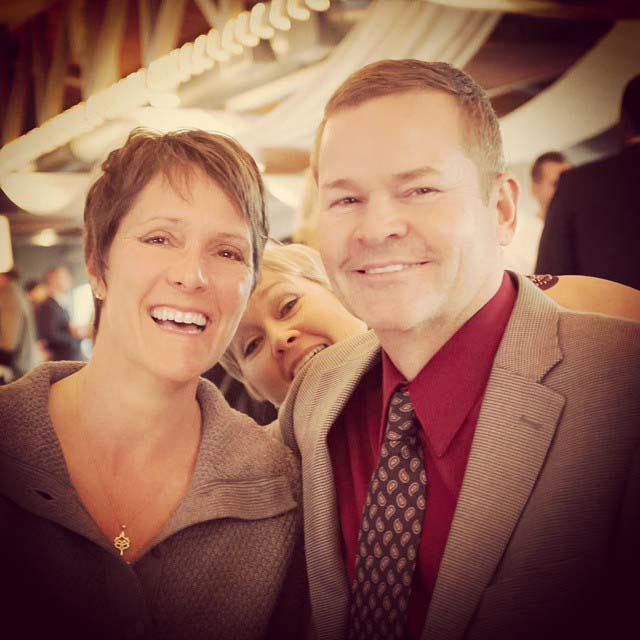
Editor’s Note: This interview was conducted by KelbyOne instructor Mark Heaps. Thanks for making this happen, Mark!
How did you get started?
In the mid 80’s, Steve took a photography class at a local community college, and I (Karen) took a photography class in high school. So with really no experience, just enough to be dangerous, we decided as couple, in our 50’s, that we would like to do photography as a hobby to spend time together.
We started out doing senior pictures, two weddings, and engagement pictures for friends and quickly realized that type of photography wasn’t inspiring us. We wanted to do something different but didn’t’ t know what that was. While looking at artists on the internet we discovered Brooke Shaden and instantly we felt like, “this is what we want to do.”
After researching her work, we discovered it used a lot of Photoshop. So, we contacted Precision Camera, our local photography store, to find out about taking Photoshop classes and we were connected with Mark Heaps, a KelbyOne instructor, and the journey began.
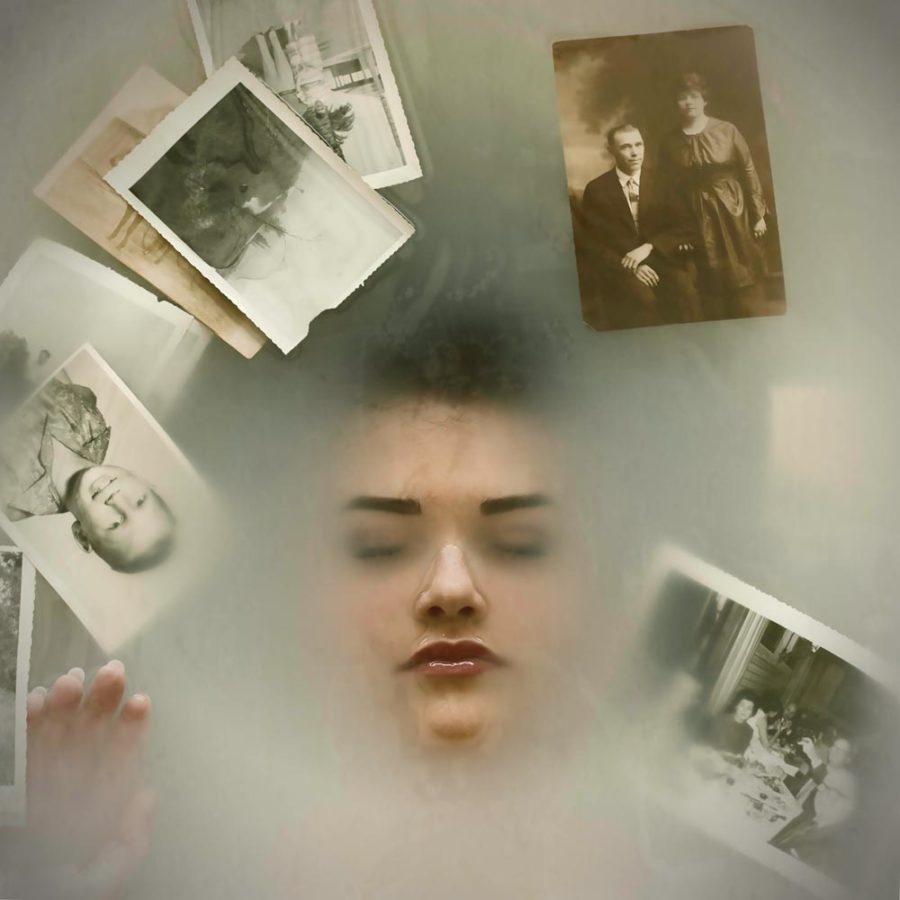
Your work is filled with these amazing characters. Are these professional models?
We do not use professional models. All our images are of people that live in and around our community. We will see someone in the grocery store, at a restaurant, or just through friends and ask them if they would like to be in one of our images. I would say 99% of the time, these total strangers, say yes…if you ask them.
You seem to have these deep intimate moments with strangers, can you tell us just one story about that?
When we are planning a project with someone new, we meet with them to talk about their life and events that have impacted them that could be used for a photo.
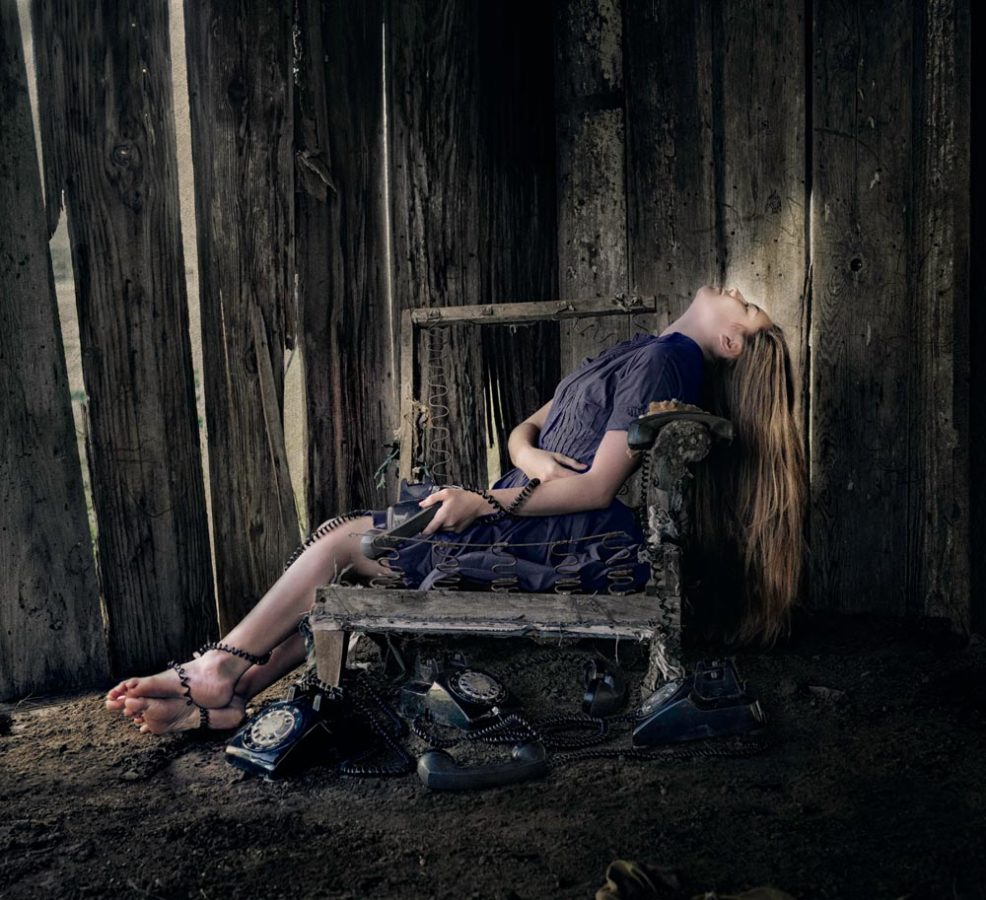
So, your images are often crafted around their stories, rather than just getting random models to portray a story?
Yes, exactly! We feel very honored and humbled to have people feel they can share very personal stories with us to be used as themes for our photographs. These opportunities not only allow us to create an image but luckily establish a new long-term friendship. Just recently we had a young woman, whom we have photographed in the past, contact us about creating a new image of her.
She lost her leg in her late teens, and, despite having a prosthetic, she has continued to use crutches to walk in conjunction with the prosthetic leg. During this pandemic, while being stuck at home, she made the decision to finally let the crutches go accepting and knowing that she wouldn’t lose a part of herself. Even though the crutches are still available to her, she’s gained a great deal of confidence using the prosthetic full time at home.
She wanted us to do a picture of her letting go and being released from the crutches and not losing a part of herself, and accepting that being OK. To us this speaks volumes…the fact that she is comfortable to contact us to do a photo to mark this milestone in her continued recovery is meaningful to us.
That sounds really powerful, can we see that one?
Not yet, but check our Instagram and it should be posted soon, maybe by the time this interview gets posted.
Your work always seems to be based on story? Can you tell us about that?
“Hold On” – the young lady in this picture contracted bacterial meningitis and as a result lost both her legs, parts of her fingers and kidneys. While discussing details with her about this time in her life she talked about being in the ICU, having so many machines with cords and tubes that there wasn’t really room for family members to be in the room with her. All she wanted was for someone to be in there and at least hold her hand. In the image we used the gurney to get the viewer in to a mindset of a hospital or clinical feeling but then by pushing her back into the vines we wanted this to represent all the wires and tubes around her in a more surreal setting.
If you look closely you will see arms around her, and we were lucky enough that her mom came to the photoshoot and was willing to participate so those are her mom’s arms around her holding her in the image.
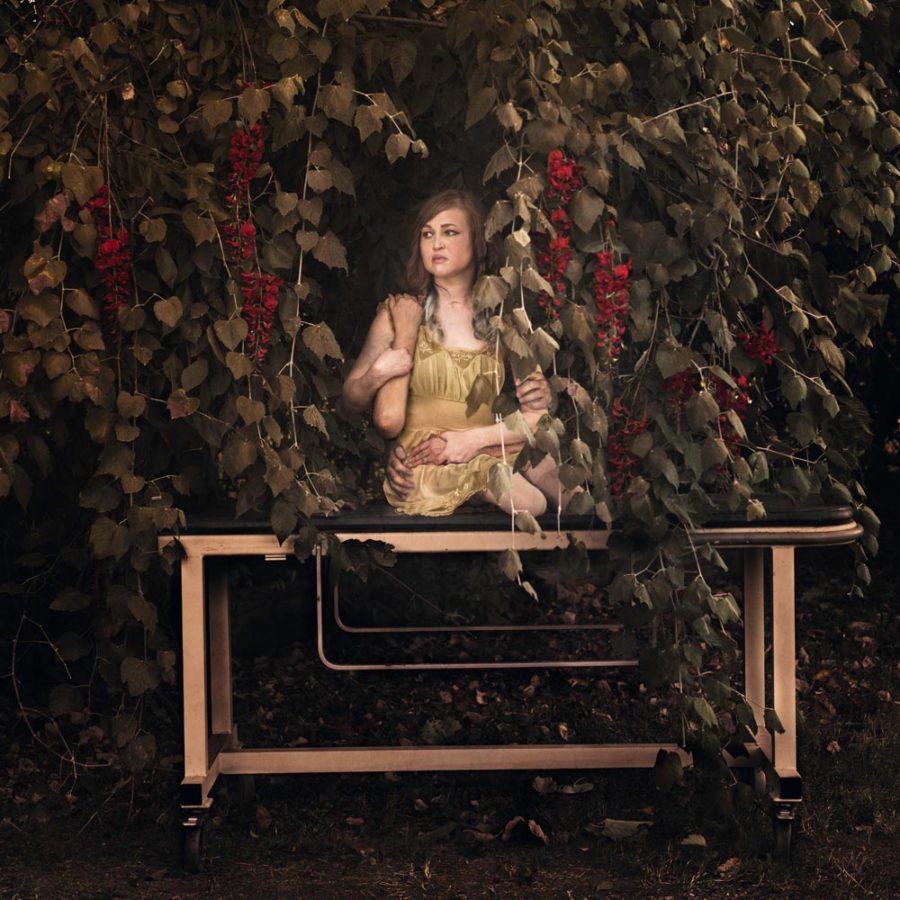
“Weight of Time” – this young woman was burned in an accident as a young child, leaving significant scarring on her abdomen and legs. Striving to gain model strength, and inner beauty, to be a positive example for her daughters and others she agreed to be a part of a photoshoot. This was her first image with us, and you really can’t see any of the scars but the process gave her so much insight into her own self.
She emailed me after the photoshoot and wrote: “What a metaphor the sand pouring down on me represented. The weight of carrying around this thing that I often keep hidden…the weight of hiding…. trying lift my head and keep a neutral face despite what might be going on in my head. It’s amazing to me that the process and surreal image turned out to be so representative of part of my reality.”
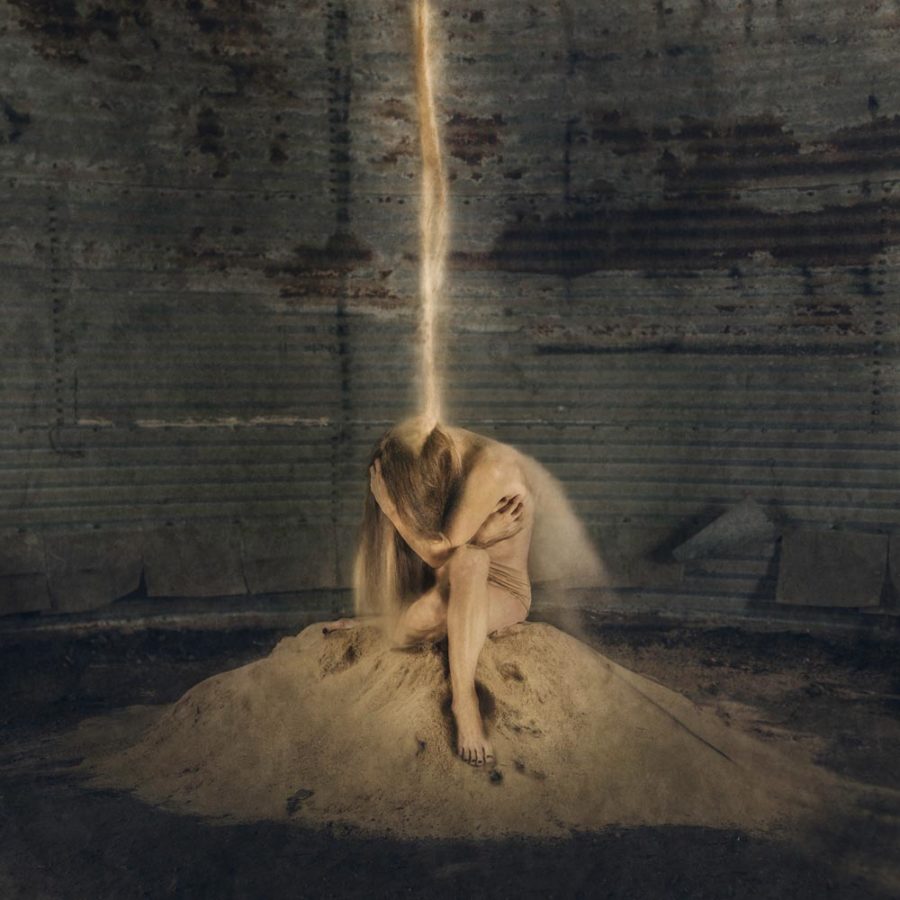
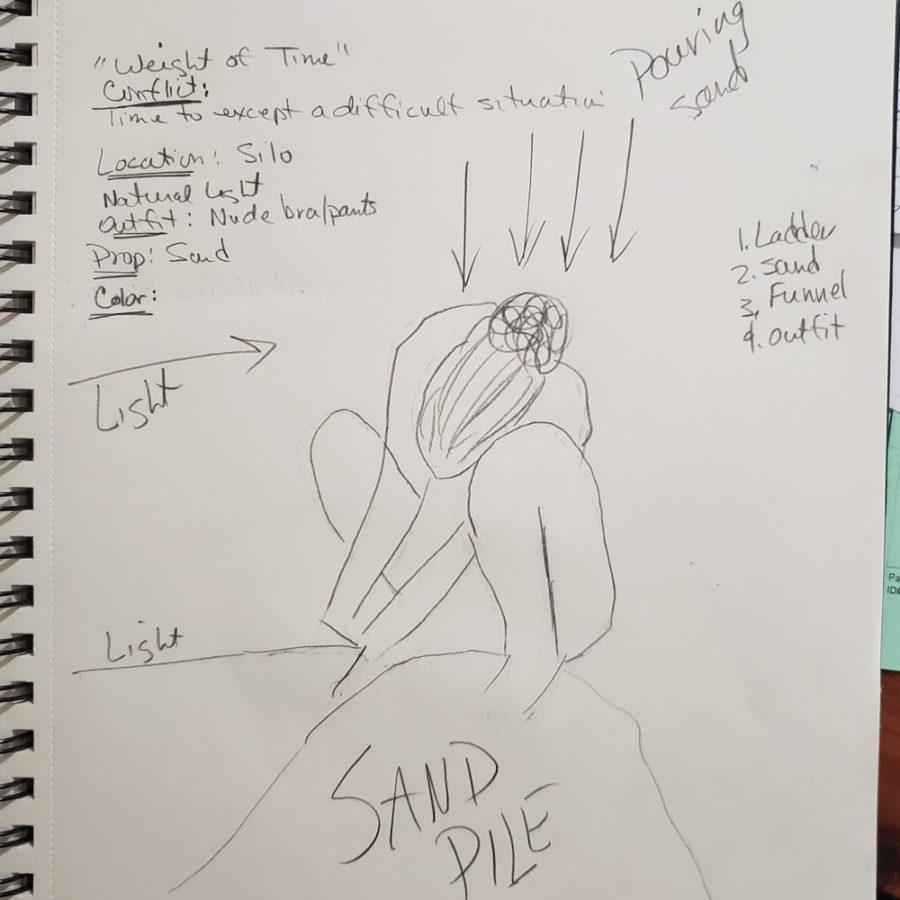
“Search of Embrace” – this picture is more an example of just sometimes you need to give yourself the chance to just experiment and go off script. We had done shots of these individuals separately but at the end we told them to all jump in together and give us a sense of what needing to hang on to someone for support meant to them. And this image was the result. We’ve learned that you definitely need a plan and can’t just wing it for a successful photoshoot, but once you’ve gotten “the shot” it’s OK to play and really stretch your thinking even if you never use the images.
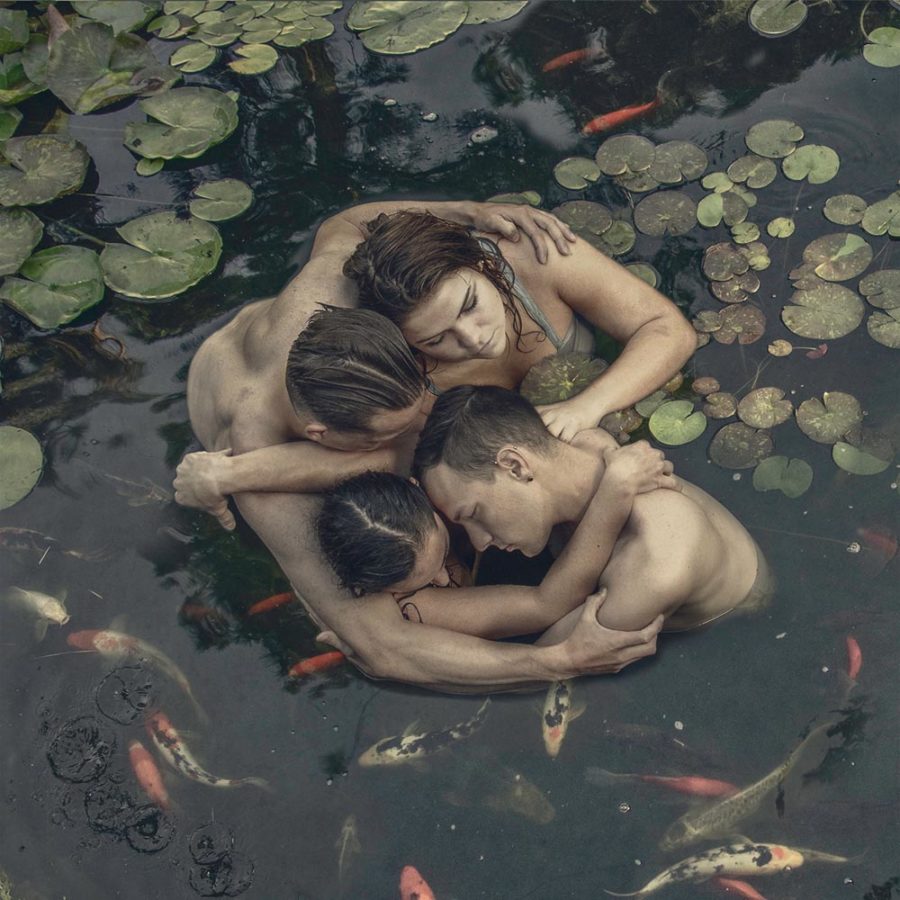
I know you’ve received criticism in the past that your work is maybe “dark” or “not friendly.” How do you respond to that and still keep producing in your style?
First, we are still trying to figure out what our “style” is even after five years. We are constantly trying new things just to see what will happen.
We think, aesthetically, we create dark colored images basically because we don’t have a strong background in color theory, so we are creating images that look good to us, even if they aren’t based on some sort of art process.
But more importantly, we believe that everyone, us included, have had dark events occur in our lives. Creating dark-themed art allows us and our models to heal and feel empowered about their recovery. We have tried to go lighter in all aspects, and for us it’s just natural to let the story and image define the tone. We are OK with knowing it might evoke uncomfortable feelings, because it causes feelings.
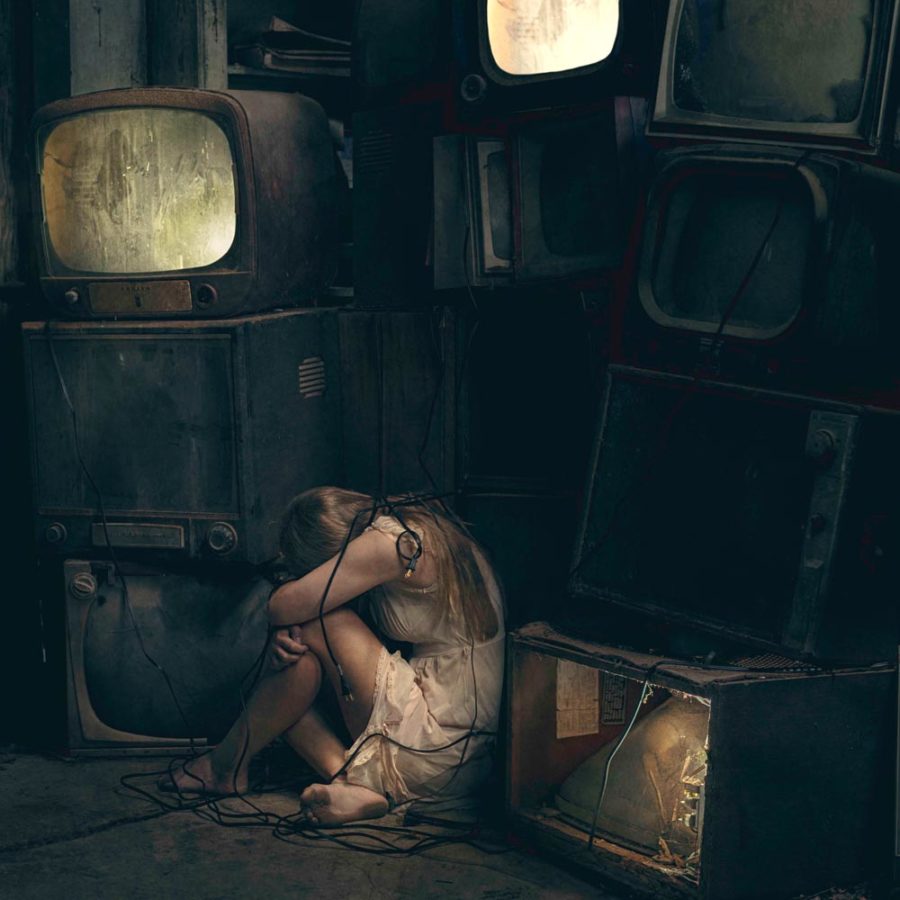
How much of your projects are pre-work, in the moment, and post-processing?
Probably the actual photographing and pushing the button on the camera for most of our photoshoots is like maybe 15 minutes. We go into the photoshoots with a clear picture of what we are wanting to capture.
But we probably spend sometimes weeks, if not months, preparing for a photoshoot. We will drive around looking for the best location for the image and well as spending time tracking down people that might various props/clothing we could borrow or making them ourselves. This is a big part of the image process for us because we really like using old abandoned locations and old vintage props. We feel it kind of helps give the images sort of a timeless feel.
Post-processing is funny, because in the beginning, when we did not know how to use Photoshop, we could spend up to a month trying to create one picture. Now it might take a day or two for a “simple image” and maybe a week for a really complicated composited image. Even today we have images that we still haven’t ever finished because, either we decided we need to redo them, or that we don’t have the skillsets to create what we imagined in our heads.
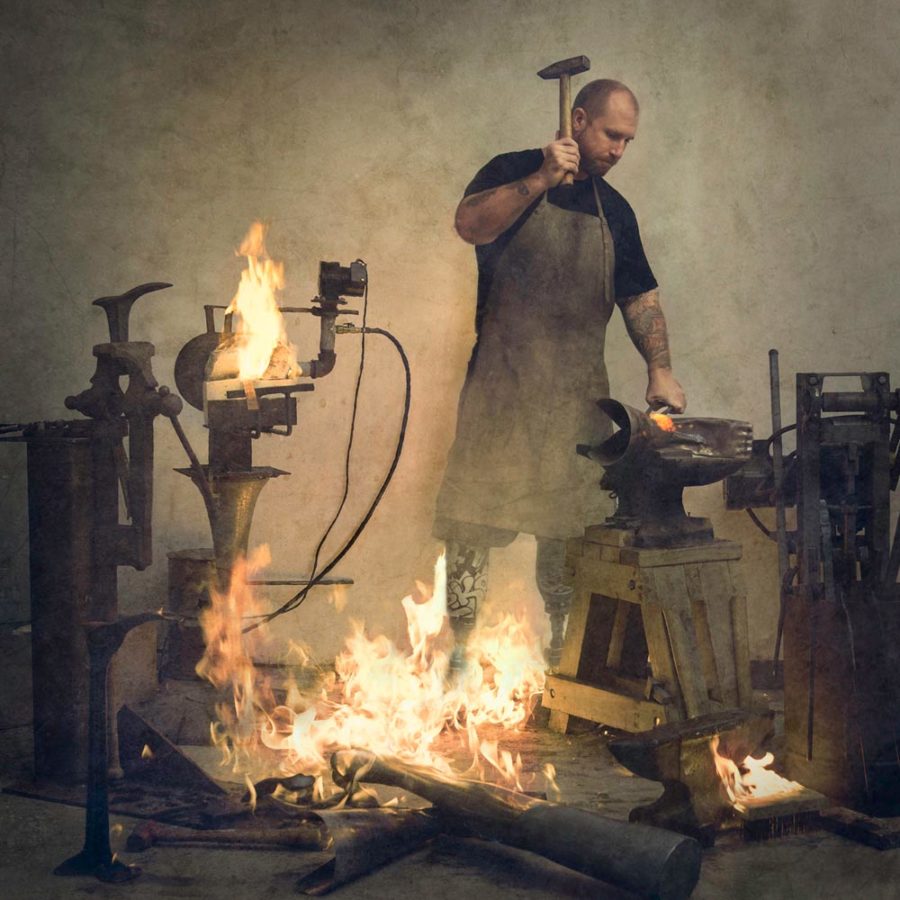
You seem to always have these interesting scenes for your images. How do you get those into your shots?
Our motto has been if we want a picture of a person in a barn…. then find a barn. We have used old silos, abandoned buildings, old train stations, ponds, etc. for our images.
We learned early on that if we need a picture of something, then we have to find it and not use stock photos. In the beginning we didn’t have the skillset to match lighting from stock images, so they never matched the actual location of the photoshoot.
For us, just beating the bushes and asking everyone for what you need and keep asking has worked for us. I (Karen) am constantly asked by Steve, “Do you have to talk to everyone?” Yes, because they might know of some cool location or person that does!
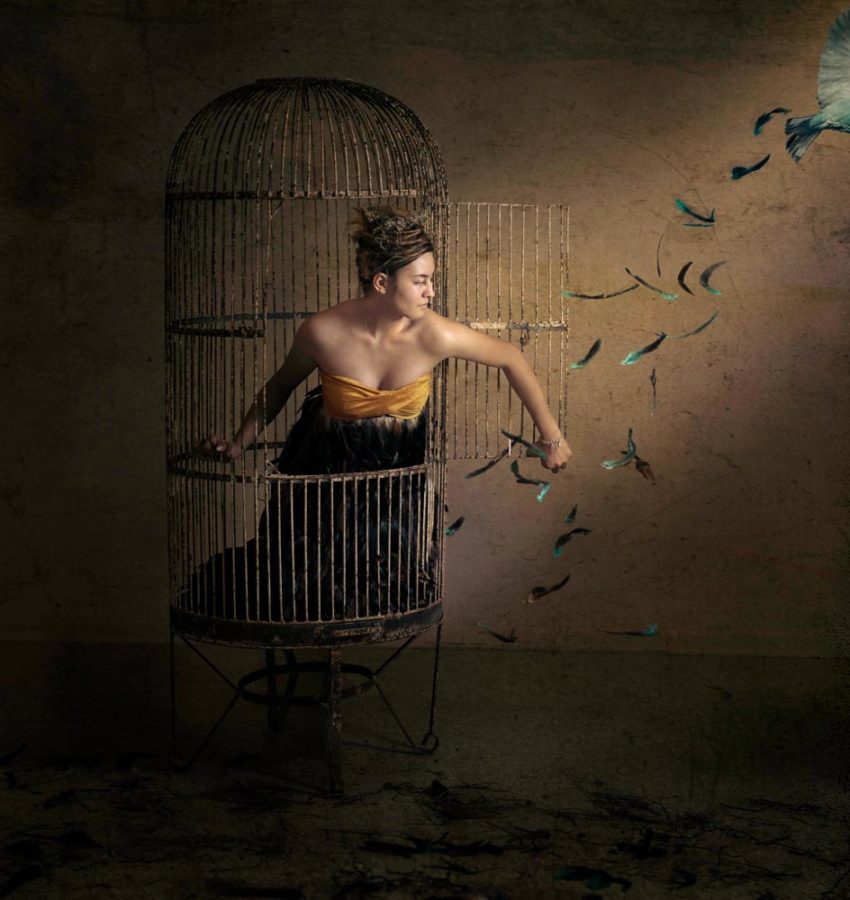
I have heard you say, “Challenge accepted!” about your shots. Is this part of your motivation?
We are constantly trying to challenge ourselves and try new things. It is what makes it fun, and we do not want to take the easy way out. It might take longer and be more frustrating in some respects, but we hope it is allowing us to create and produce the best possible images that we have the knowledge and skill sets to create.
We learn something literally at every photoshoot, so the harder and more challenging the more we learn. We go into every photoshoot, as well as our models, knowing we might fail but that is OK.
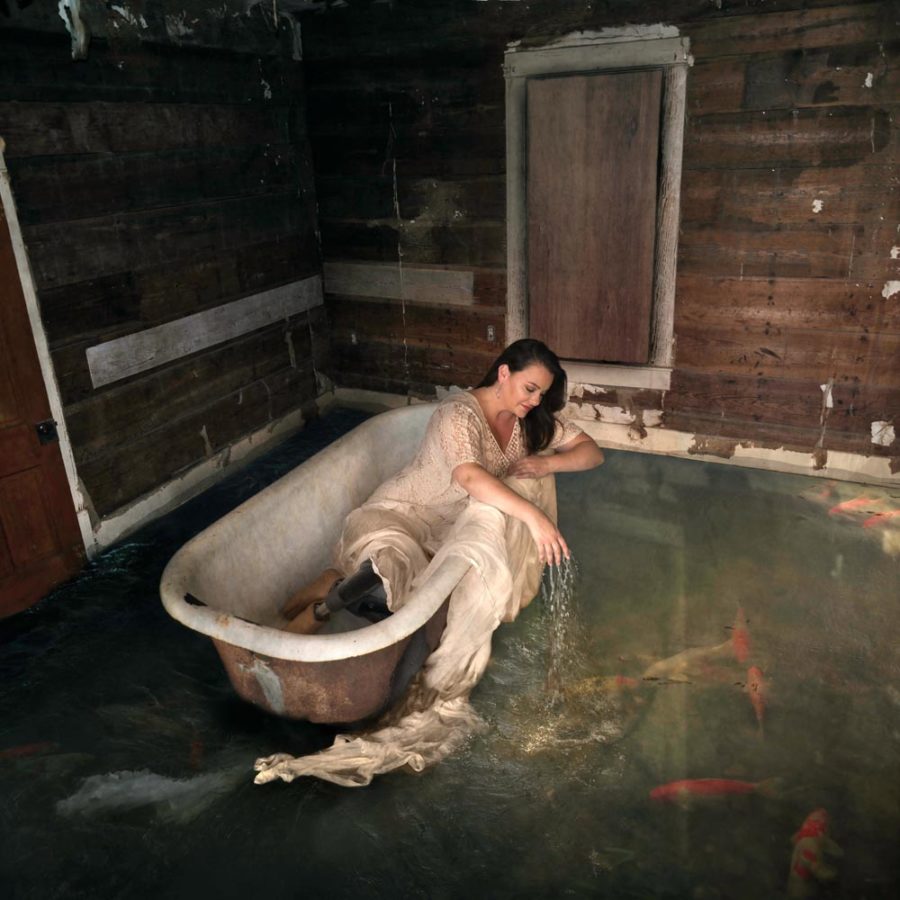
You’ve said this to me in the past. Karen quote! “It’s not about us, it’s about the people we’re photographing.” What does that mean?
We do not do it for the likes, or the sort of measures that people aim for today. But we wish the story of these people we’re getting out there to help influence the world.
We have met some of the most amazing resilient people we have ever known in our lives through these photoshoot opportunities. We come home after every photoshoot, and, as cliche as it might sound, it reinforces how very thankful we are for our family, and each other. We see through the eyes of the individuals that we photograph, how easily your life can be impacted by unforeseen, sometimes split second, life events.
We realized while photographing our first amputee that both of us in our 50’s had never met or spoken to someone with a limb loss event. We have learned so much about their lifestyle and daily struggles that we never would have known if we didn’t do this type of photography. Knowing these individuals definitely helps makes us better people.
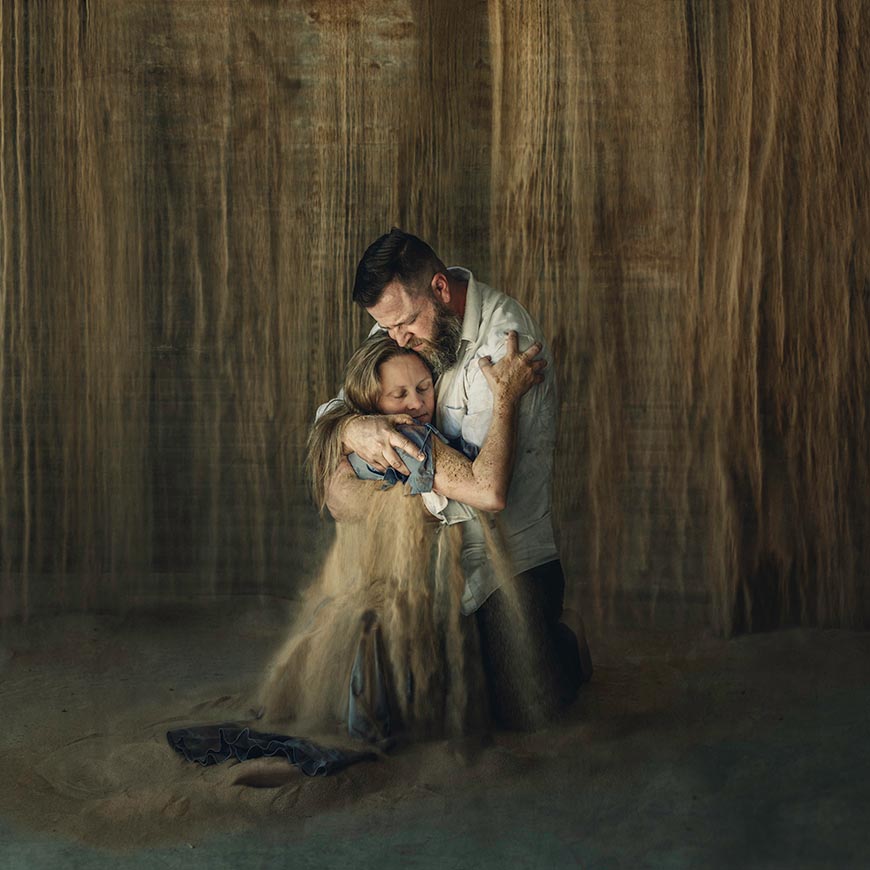
So, you take photos of strangers, what happens to these relationships after you’ve shot them.
Well, most importantly, our lives and community are much richer knowing and interacting with these people. We would say that a large number of these individuals have permanent places in our lives. We go out to dinner, talk on the phone, and maintain contact with some almost weekly since the event of photographing them. For some it’s been years.
We’ve attended weddings, baby showers, graduations, etc. of many of the people we have been lucky to meet through our photography. We go into these photoshoots hoping that we have made a connection with these individuals, and that they will become lifelong friends and not just momentary subjects in an image.
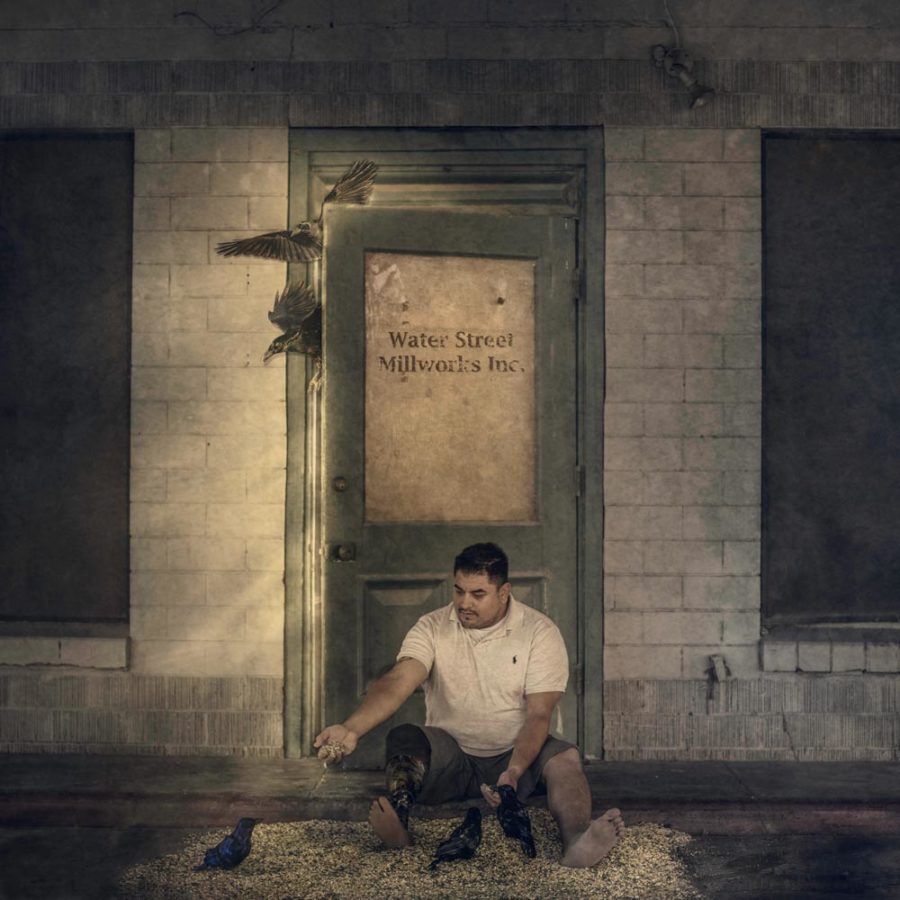
If you had any advice to give people that have started this journey, but talk themselves out of creating that image they see in their head, what would you tell them?
Failing is part of the process so embrace it. Laugh at yourself and all that you don’t know and celebrate every little new thing you learn or accomplish. After five years, we still throw entire photoshoots away but learn from all steps of the process even if we don’t get an image.
Be patient with yourself…. learning Photoshop is not a task for the faint of heart. It can be extremely easy to get discouraged, so just walk away and take a break if you find yourself getting frustrated and start with fresh eyes on a new day.
Don’t be afraid to reach out and ask for help. We have been so lucky to have had so wonderful artists respond and give feedback to our work, just by sending a simple email.
Keep remembering why you are making the images that you want to create, regardless of what type of photography that might be. There are so many amazing artists out there and we are constantly inspired by individuals like Nicolas Bruno, Daniel Bilmes, Tom Chambers, and Emil Alzamaro. Do not compare yourself to another artist though…. you have your own visions and ways to create art that are unique to you.
Finally, everyone must start at the beginning so even the artist that you idolize had to start where you are now.
You can see more of Karen and Steve’s work at TwoKeysPhoto.com, and keep up with them on Instagram.



